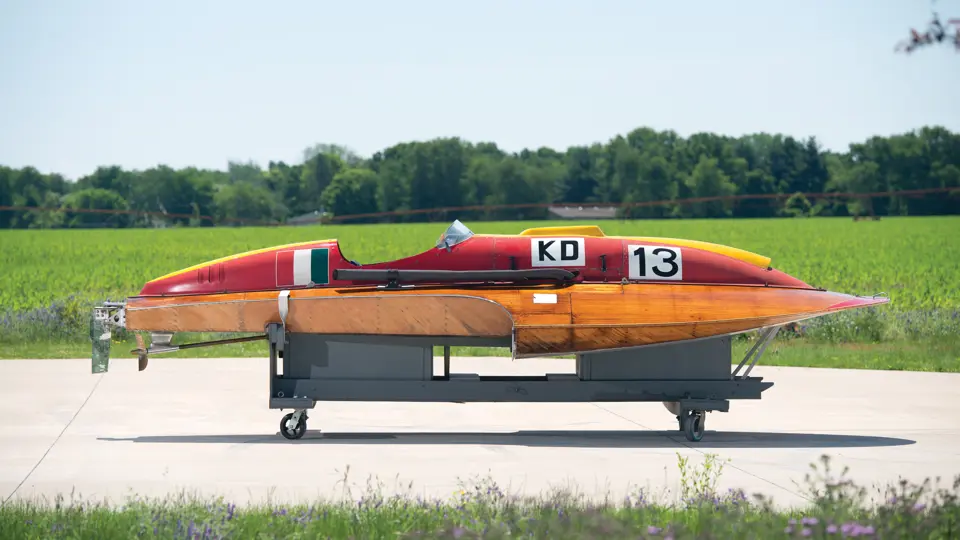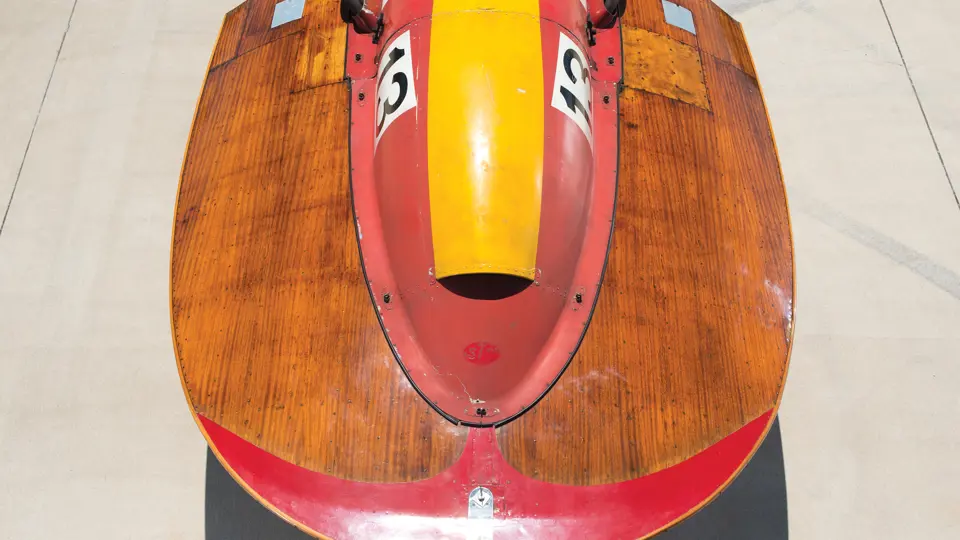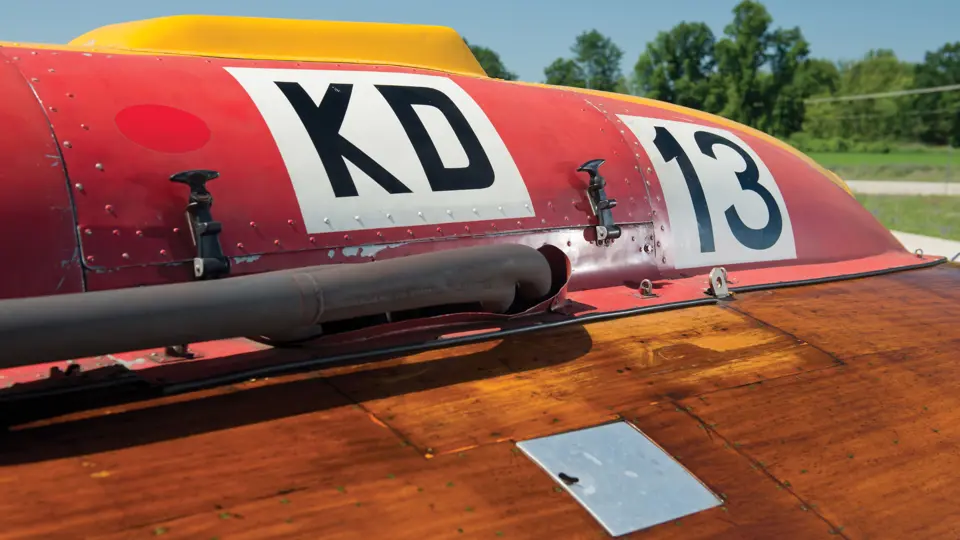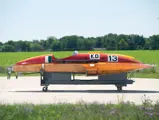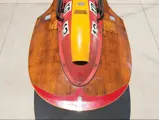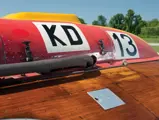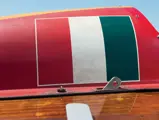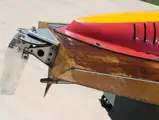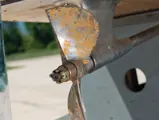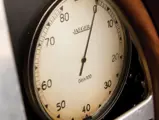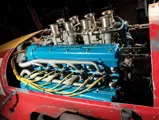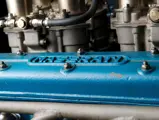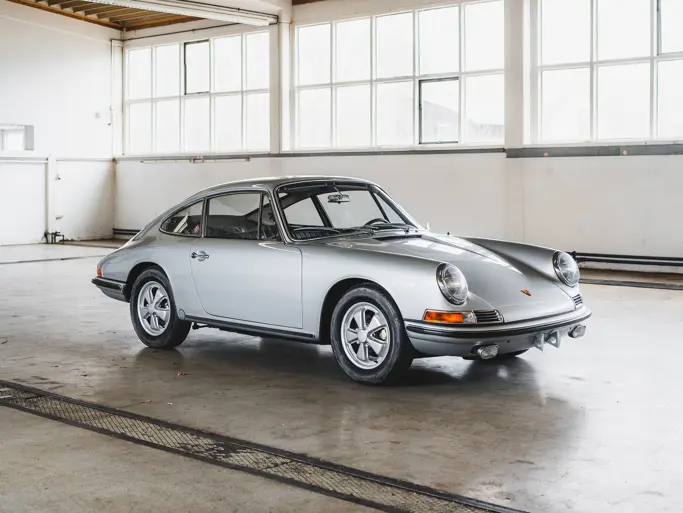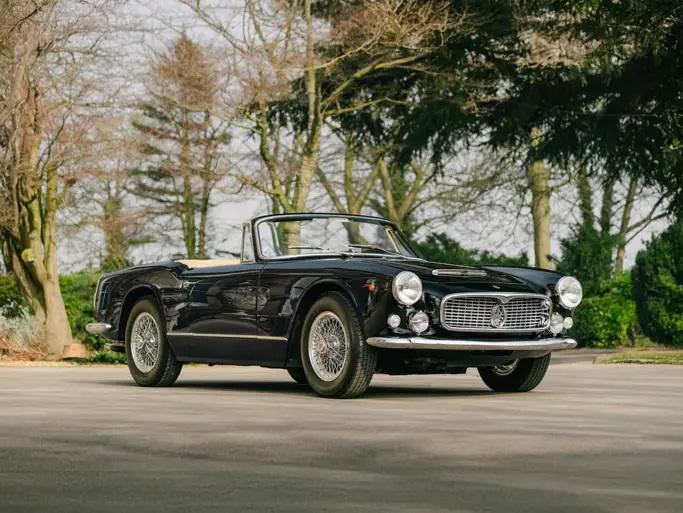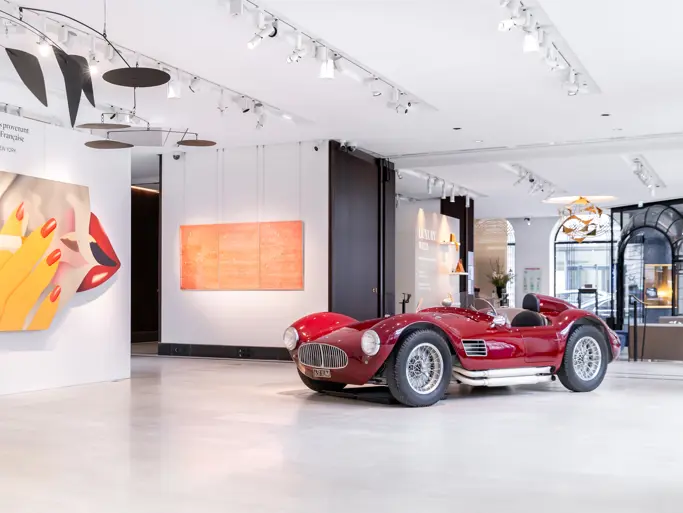520 hp (shaft), 5,663 cc DOHC Maserati V-8 engine with four twin Weber type 46 carburetors. Length: 20 ft.
If you were an Italian speedboat builder in the 1950s, and your new hydroplanes were the most audacious crafts on the water, you’d turn to your own domestic racing engine makers in your search for ever more power. You might start out with Ferrari, but when Maserati’s utterly brutal 450S racing V-8 became available specifically for marine duty, you’d opt instead for that.
The first enlarged, marinized version of the 450S engine appeared in 1958. Thanks to wet liners, the 4.5-liter engine in the 450S was relatively easy to increase in bore, so marine variants in 5.6- and, later, 6.4-liters were built. After a single preliminary example, Maserati constructed six more Tipo 59 powerplants in series, beginning February 14, 1959, with number 4515 for Lino Spagnoli. Presumably, then, this was the engine that powered his KD-class hydroplane to an overall World Championship victory that year, the first of 10 consecutive titles for Timossi-Maseratis.
At the same time, Timossi #13 was being raced by the immortal Carlo Casalini, who took it to 2nd place in the KD-Class European Championship in 1960 and 1961. Amazingly, Casalini’s first race was in 1928, and 40 years later, he won a World Championship in an LX-class outboard. Even then, Casalini wasn’t done with the sport, winning his last race in 1975, with a total of 163 life-time wins altogether.
Cantieri Timossi, on Lake Como, had been building increasingly successful three-point hydroplanes for almost a decade and had risen to fame a with Ferrari-powered world speed record in the early 1950s. By the end of the decade, Timossi had begun a long and exceptionally fruitful association with Maserati, which included testing for road engines in their boats, as well as Maserati marine engines that were essentially for Timossi’s exclusive use.
Among Timossi’s best customers were the Guidotti family, who were deeply affiliated with the sport’s Italian governing body and the Ezio Selva race team (named in honor of the late, great racer). The Guidottis even tested Maserati’s Tipo 53 engine, which was intended for the 150S race car.
Thus, if one wanted a Timossi hull but lacked the resources to acquire a new one, a used boat from the Guidottis was a good bet, and when Gianluigi Crivelli received sponsorship from Ignis for a boat in 1962, it appears that he bought one.
As with so many other racing vehicles, Italian hydroplanes traded hands many times, leaving a difficult trail to untangle. Individual races were not documented as well as automobile races, where a photographer could stand on the side of the course. Conversely, there were fewer vehicles, and the tremendous expense of competing at the top level meant a smaller pool of potential competitors. All of which explains how Carlo Casalini’s Timossi #13 ended up in the hands of the Guidottis and then Crivelli, who was also able to acquire a used race engine: Spagnoli’s Tipo 59, number 4515.
Crevelli became increasingly competitive in KD-13 as the decade went on, reaching 2nd place in the KD European Championship in 1968 and then winning the Gran Premio Campione D’Italia and the World Championship on September 7, 1969. For that event’s Prima Prova, he covered over 12 kilometers in 13 minutes 7.2 seconds, for an average speed of nearly 110 km/h, and then he went on to win the Conda Prova. He took 2nd in the Terza Prova and won the Classica Finale, in 40 minutes 6 seconds, which was 11 seconds ahead of Gino Lupi in the eight-liter, B.P.M.-powered #22 Timossi-Celli.
The timing was perfect, as 1969 was at the end of large-displacement racing in Europe. However, it corresponded with its rise in America, and KD-13 ended up in Toronto, where it was eligible for a seven-liter class. At some point, engine number 4515 was damaged and the hull was stored for years in a Canadian boatyard. Richard Crump (author of the seminal book Maserati: Sports, Racing & GT Cars, 1926–1975) eventually acquired and restored both, and he reunited engine 4515 and Timossi #13 in their World Championship-winning configuration. He used it sparingly in vintage competition, and it has only been operated on water once in 13 subsequent years in the Thomas Mittler Collection. It retains a startling degree of originality, with left and right (sinistra and destra) hull plates marked Guidotti and a highly original hull. And, of course, it also retains its original engine. Period photographs show #13 being raced from circa 1960 with Carlo Casalini and right up through the 1969 World Championships with Gianluigi Crivelli. During a decade when Timossi-Maseratis completely dominated the highest tier of hydroplane racing, Timossi #13 was always at the front of the pack. Few other competition vehicles have ever won at championship levels over such a span of time.
When Gianluigi Crivelli bought Timossi #13 and installed Tipo 59, number 4515, he obviously knew what he was doing: uniting what was already a very fast boat with what became one of the most desirable Italian V-8 engines ever built. Even with the later availability of the 580-horsepower Tipo 64 Maserati marine engine, the Tipo 59 remained the powerplant of choice for KD-class hydroplanes. Among all those, Timossi #13 is the most correct and original survivor, as well as the 1969 World Championship winner.
That unbeatable combination ensures that it will be, as it always has been, among the most desirable and important 1960s racing boats in existence.

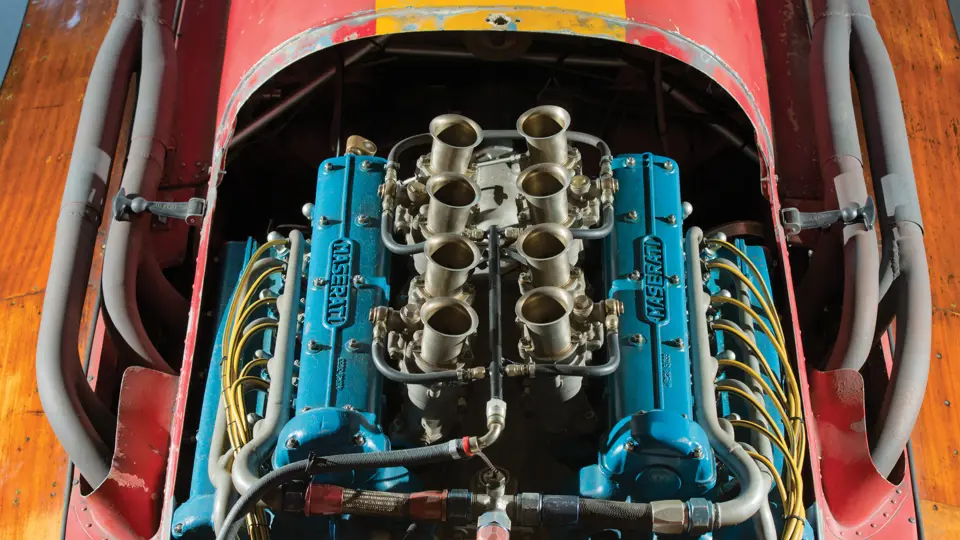


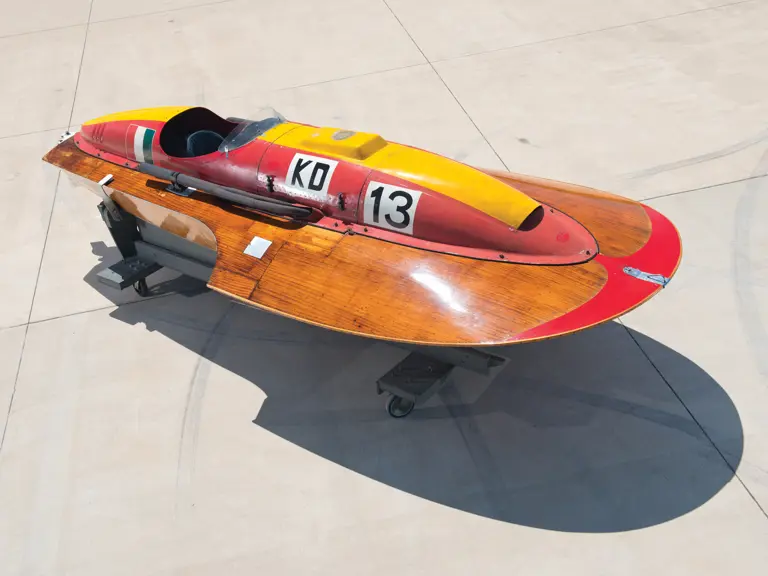

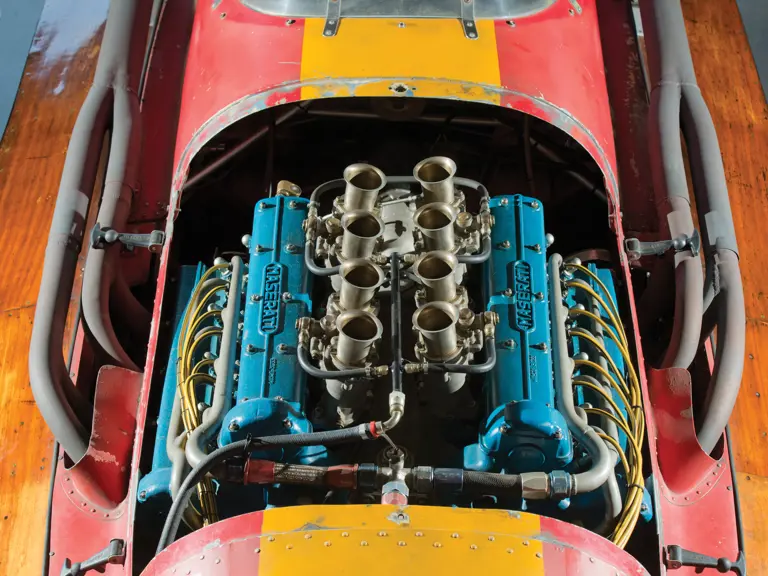
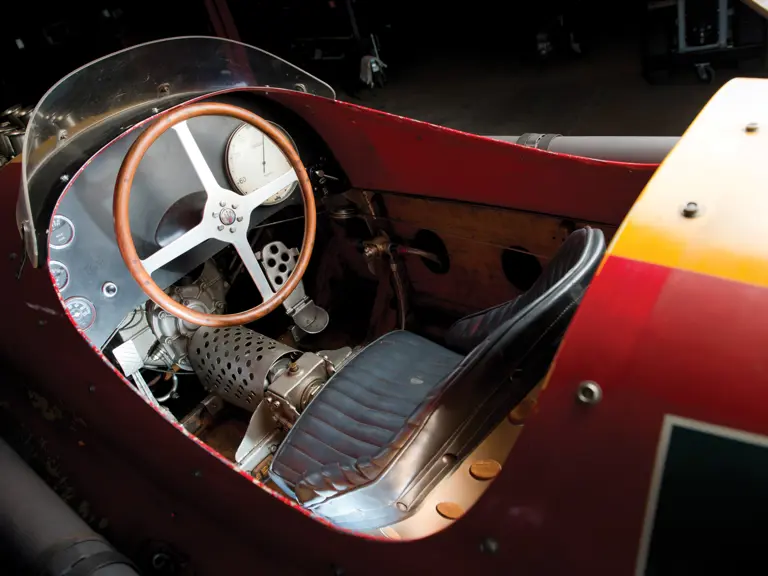
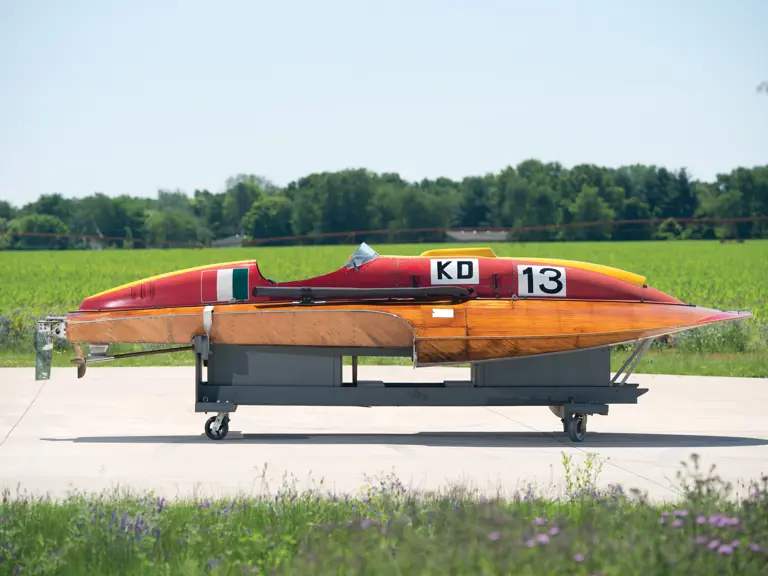
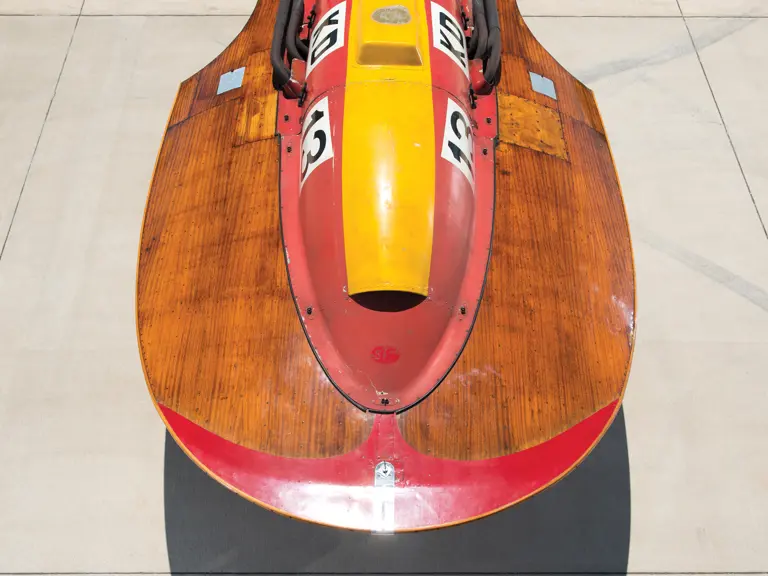
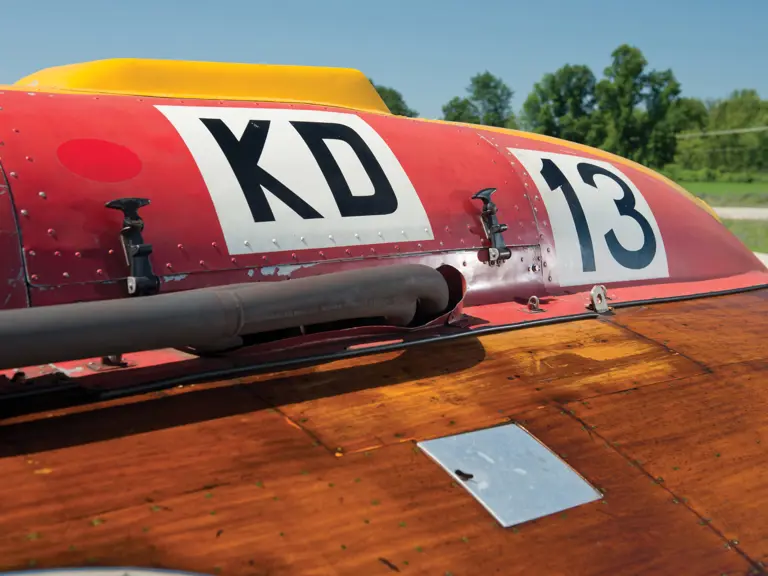

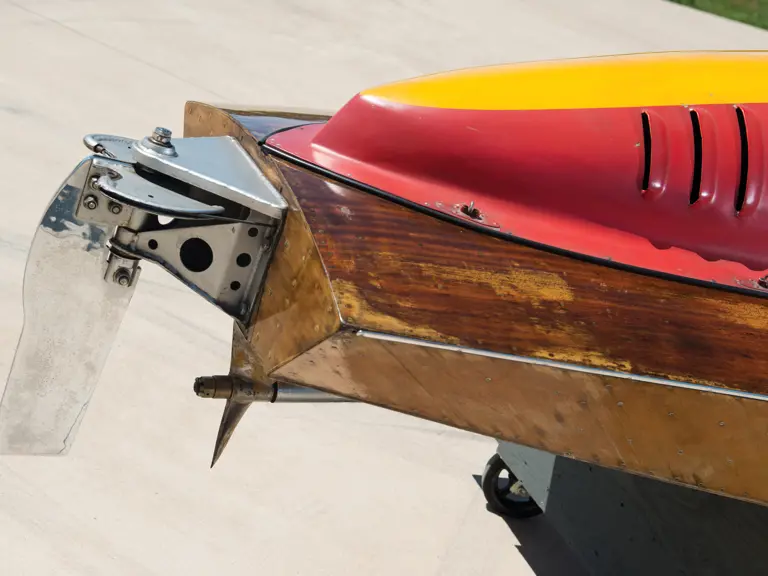
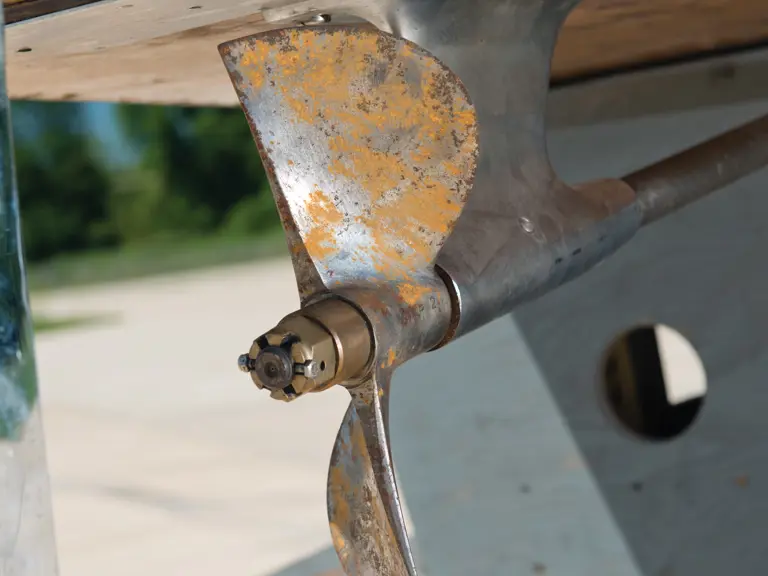
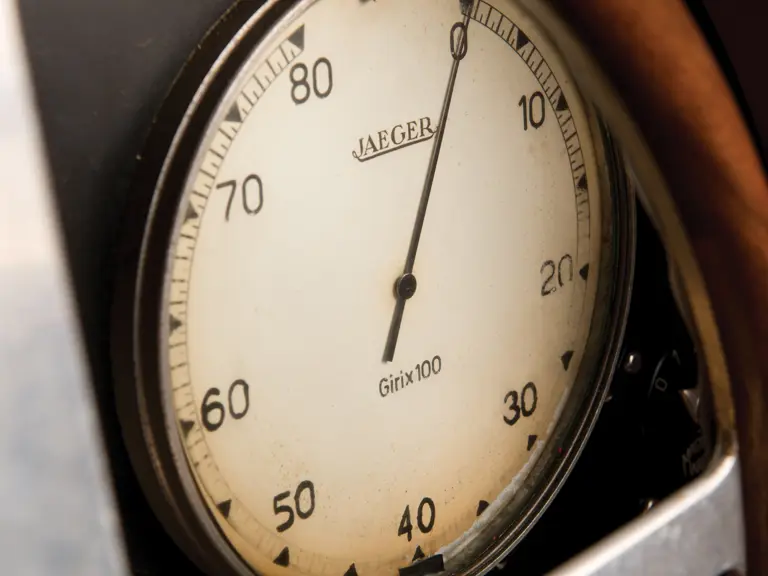

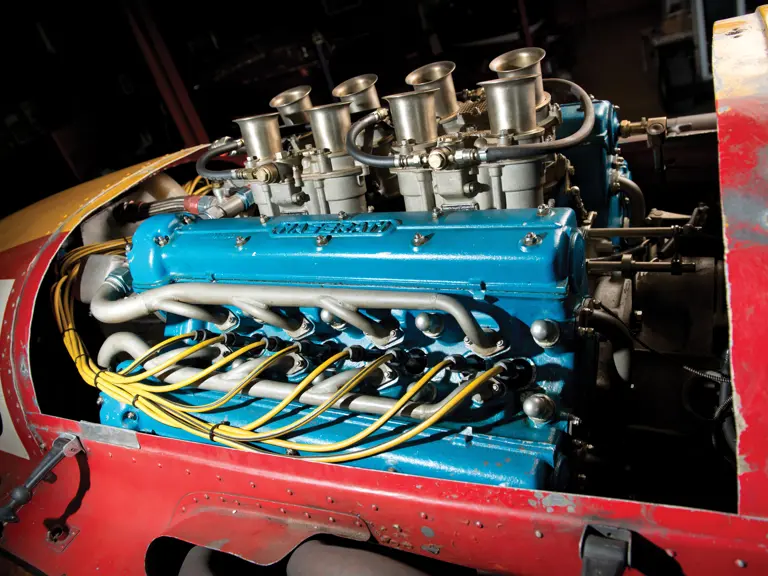
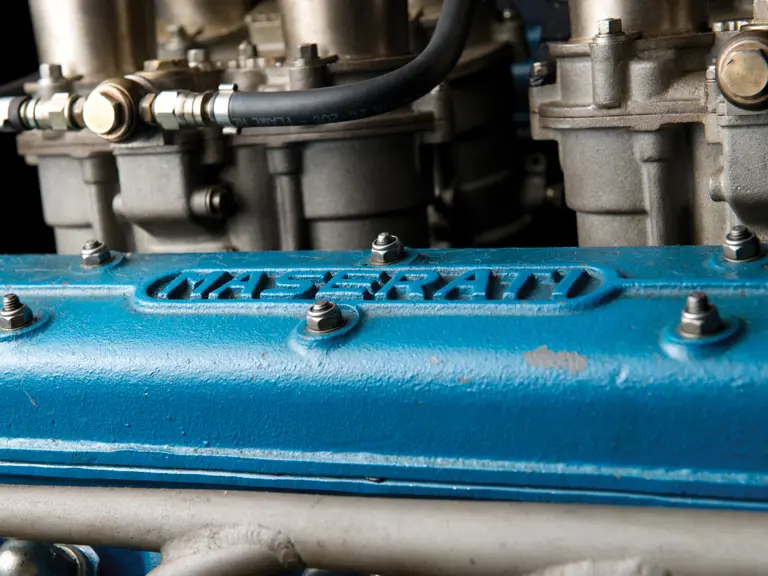
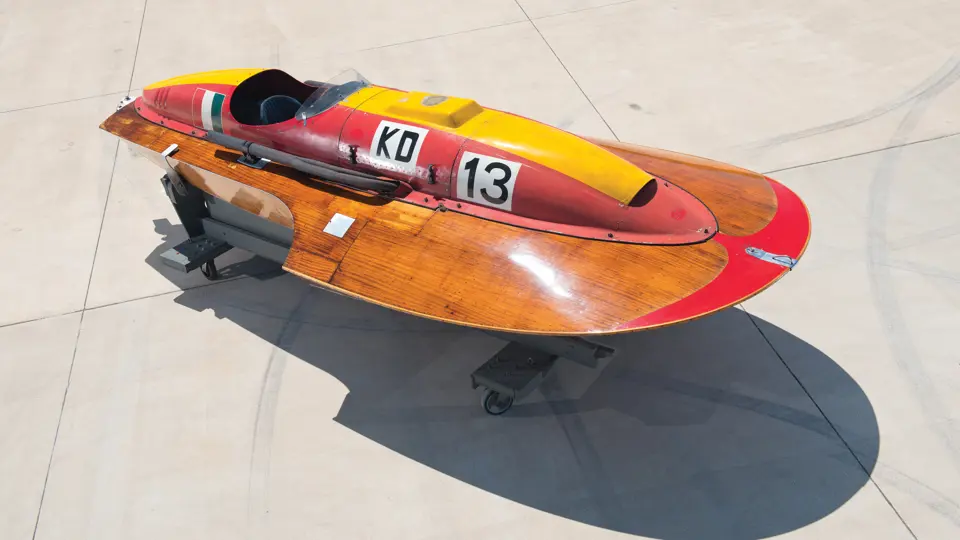
 | Monterey, California
| Monterey, California
